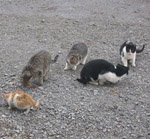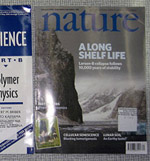Protecting killer whales from whale watchers
 Mammals,
Mammals,  Recreation,
Recreation,  Technology-GIS
Technology-GIS  Porpoising of a south resident killer whale (Orcinus orca) off the coast of Washington. Image credit, Minette Layne.
Porpoising of a south resident killer whale (Orcinus orca) off the coast of Washington. Image credit, Minette Layne.
Scientists have proposed restricting whale watchers and other vessel traffic from a small area off the coast of Washington to protect a highly endangered population of killer whales from human disturbance.
Erin Ashe and fellow researchers selected the area by collecting data on killer whale behavior patterns and figuring out where the animals were more likely to feed. Their approach is innovative because marine habitat conservation efforts rarely incorporate species behavioral data.
In 2007, the population of southern resident killer whales was placed on the U.S. Endangered Species List. Scientists think that the population, which numbers only 87, suffer from a combination of limited food and repeated disturbance from human activities. Overfishing of chinook salmon has likely led to a decline in available prey for the animals.
Meanwhile, intense commercial and recreational whale watching traffic in the area may be exacerbating the problem. Studies have found that boats cause the killer whales to swim erratically and reduce the time spent feeding, which in combination with limited prey availability, may harm population fitness. Boats seem to have less of an impact on the animals when they are engaged in non-feeding behaviors.
To determine the location of the site, the researchers surveyed killer whale behavior from May to August 2006 recording incidences of resting, travel/foraging, feeding, and socializing. They then spatially mapped out feeding probabilities across the coastal area. They also interviewed coordinators from regional-boater educational programs to define a manageable size for successfully implementing a vessel exclusion program assuming typical levels of funding.
Based on this information they identified a potential marine protected area site measuring 7.4 square natical miles off southwestern San Juan Island where killer whales were 2.7 times more likely to be engaged in feeding than adjacent waters. Even though, the size of the protected area would be relatively small, the idea is that by targeting high-activity feeding locations, the reserve could have a big impact on conservation. The researchers hope that their study can inform ongoing recovery action plans for the population.
--Reviewed by Rob Goldstein
Ashe, E., Noren, D., & Williams, R. (2009). Animal behaviour and marine protected areas: incorporating behavioural data into the selection of marine protected areas for an endangered killer whale population Animal Conservation DOI: 10.1111/j.1469-1795.2009.00321.x




Reader Comments